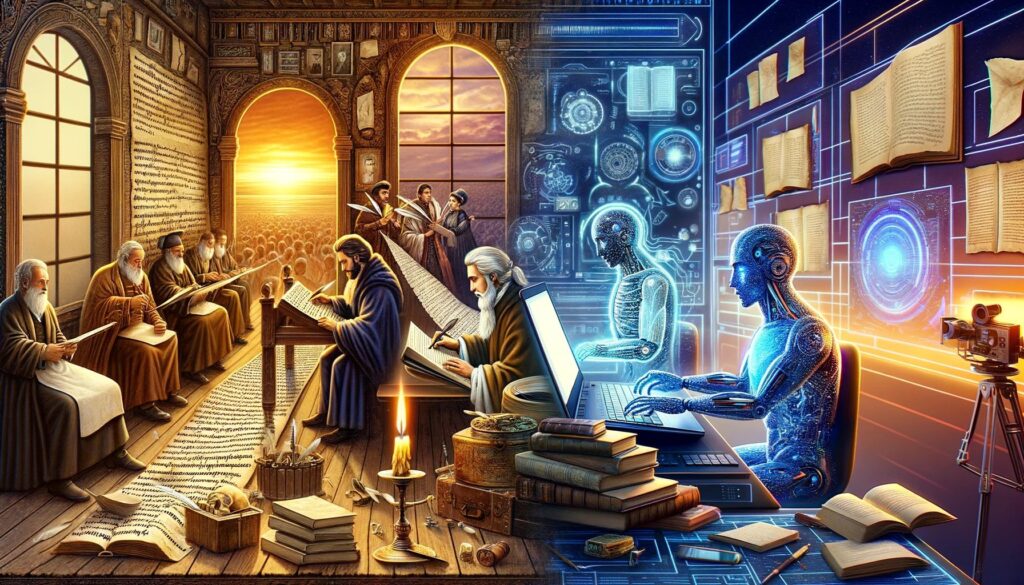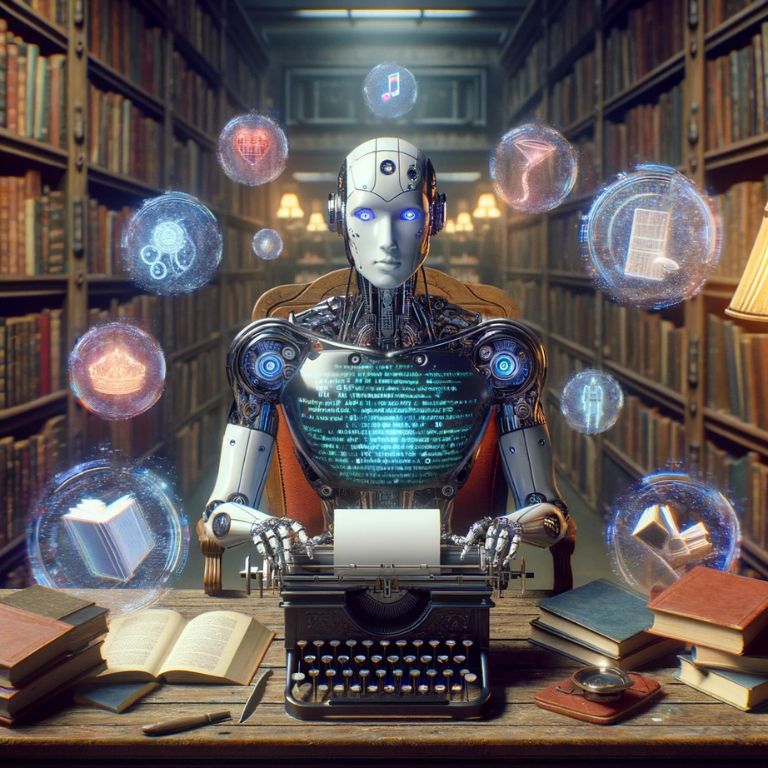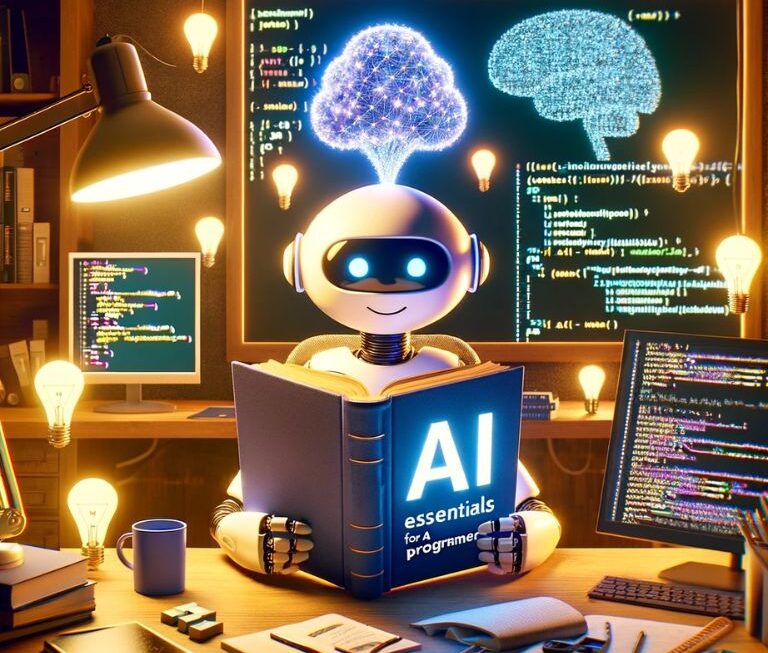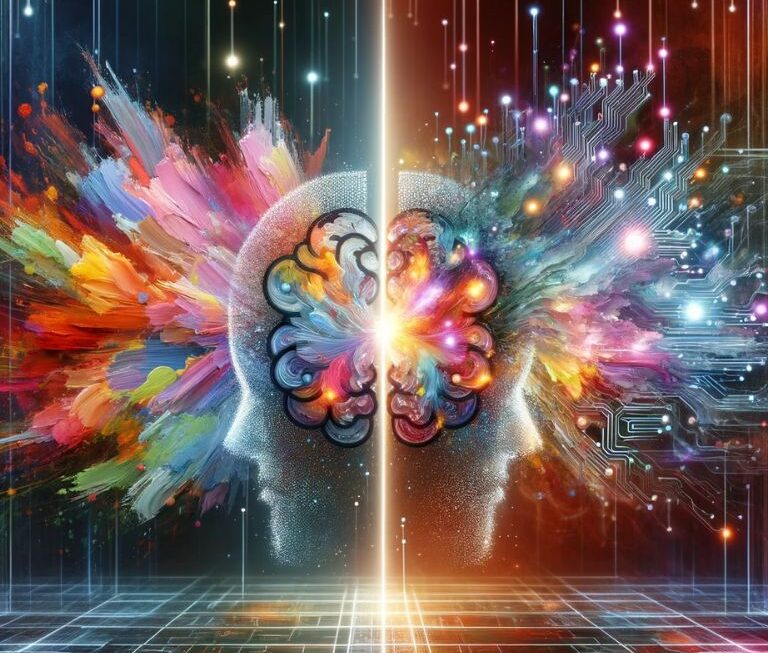AI-generated fiction is revolutionizing storytelling, blending artificial intelligence with creative writing to create a new literary genre. This guide explores how AI is transforming the narrative landscape, offering insights into creating your own AI-assisted stories. Dive into a world where technology and creativity merge, redefining the possibilities of storytelling.
Brief Overview of AI-Generated Fiction and Its Significance
In the digital age, the intersection of artificial intelligence and creative writing has given birth to a novel genre: AI-generated fiction. This genre leverages the capabilities of advanced AI algorithms to create narratives that are not only coherent but also creatively rich. AI-generated fiction is significant for several reasons. It represents a new frontier in literature, where the computational power of AI meets the nuanced art of storytelling. This fusion offers a unique blend of human creativity and machine efficiency, potentially leading to the creation of novel literary styles and themes that were previously inconceivable.
A Teaser About What the Article Will Cover
This guide will navigate through the fascinating world of AI-generated fiction. From exploring the technologies that power AI writing to understanding how predictive models shape narratives, we’ll delve into every aspect of this genre. We’ll provide a step-by-step guide to creating your own AI-generated stories, discuss the implications of this technology in literature, and examine real-world examples and achievements in AI fiction. Prepare to embark on an exploration of how AI is not only augmenting but also redefining the realm of creative writing.
Understanding AI in Literature
The Evolution of AI in Writing

The journey of AI in writing dates back to the late 20th century, with simple text-based programs that could generate rudimentary poems and stories. These early experiments laid the groundwork for today’s sophisticated AI models, which employ advanced neural networks and natural language processing (NLP) techniques. The evolution has been marked by significant milestones, such as the development of algorithms capable of understanding and mimicking human language nuances. As AI technology progressed, so did its ability to produce more coherent, diverse, and complex literary pieces, transitioning from mere novelty experiments to tools capable of aiding human creativity in writing.
How AI is Changing the Literary Landscape
AI’s impact on literature is reshaping storytelling. Combining algorithmic efficiency with human creativity, AI-generated literature explores new themes and perspectives. From aiding authors in overcoming writer’s block to crafting entire novels, it broadens literary horizons. AI’s data analysis prowess incorporates current trends and styles, enhancing content relevance and engagement for contemporary readers, revolutionizing traditional narrative creation.
Examples of AI-Generated Fiction
- “Sunspring” (2016): A short film with a screenplay written by an AI, showcasing a unique narrative style.
- “1 the Road” (2018): A novel credited as the first written by an AI, taking readers on a literary road trip across America.
- AI Dungeon: An interactive fiction game where players’ inputs are used by an AI to craft ongoing narratives, offering an immersive storytelling experience.
- “The Day A Computer Writes A Novel” (2016): A Japanese AI program authored a short novel that passed the first round of a national literary prize.
- GPT-3 Generated Blogs: Various blogs and articles have been published online, written entirely or partially by OpenAI’s GPT-3, demonstrating AI’s capability in generating coherent and contextually relevant content.
The Mechanics of AI-Generated Fiction
Key Technologies Behind AI Writing
AI-generated fiction relies on two essential technologies: Natural Language Processing (NLP) and Machine Learning (ML). NLP empowers AI to comprehend and produce human language, enabling it to read text, understand context, and replicate various linguistic styles. NLP algorithms delve into text structure, semantics, and syntax to craft engaging narratives. ML, on the other hand, enables AI to learn and evolve from data inputs. In the realm of writing, ML algorithms leverage extensive literary datasets to adapt their writing style and content, continually improving to generate fiction that not only adheres to grammar but also captivates with creativity.
Understanding Predictive Models in AI Writing
Predictive models in AI writing play a crucial role in forecasting the direction of a narrative. These models, trained on large datasets of existing literature, predict the likelihood of various plot developments, character actions, and dialogues based on the context established in the story. This predictive capability is not about determining a fixed outcome; rather, it’s about offering a range of plausible narrative paths. As a result, AI can generate dynamic and unpredictable stories, providing writers with a multitude of creative options.
The Role of Data in Shaping AI Fiction
Data is the lifeblood of AI-generated fiction. The quality, diversity, and volume of data fed into AI models directly influence the output’s quality. Rich datasets enable AI to produce more nuanced and varied narratives. These datasets can include classical literature, contemporary works, genre-specific writings, and even experimental prose. By analyzing and learning from this diverse range of styles and themes, AI can create fiction that resonates with a wide audience and captures the richness of human storytelling.
Step-by-Step Guide to Creating AI-Generated Fiction
Setting Up Your AI Writing Tool
To begin your journey into AI-generated fiction, the first step is selecting and setting up an AI writing tool. Here are the key steps:
- Choose an AI Writing Platform: Select a platform that aligns with your needs, whether it’s a sophisticated tool for novelists or a more basic model for short stories or experimental writing.
- Installation and Configuration: Follow the instructions to install the software. Configure the settings to suit your writing style and preferences.
- Familiarize Yourself with the Interface: Spend some time understanding the tool’s features and capabilities. Look for tutorials or guides provided by the platform to make the most of its functionalities.
- Test with Small Writing Prompts: Before diving into larger projects, experiment with small prompts to understand how the AI responds and generates content.
Feeding the AI with Data and Themes
To proceed, you must equip your AI tool with essential data and thematic elements. This entails providing seed data, which serves as the AI’s initial input, ranging from rudimentary plot outlines to detailed character profiles or dialogue excerpts. These initial inputs lay the groundwork for the AI’s creative process. Additionally, it’s crucial to distinctly outline the themes, genres, and stylistic preferences you wish your story to encompass. The more precise your instructions, the closer the AI’s output will align with your intended vision.
Refining and Editing AI-Generated Content

Once the AI generates the initial draft, refining and editing are crucial:
- Review for Coherence: Check the generated content for narrative coherence and consistency. Ensure the story flows logically and maintains thematic integrity.
- Edit for Style and Voice: Adjust the style and voice to ensure they align with your personal writing style or the intended tone of the story.
- Incorporate Human Creativity: Use the AI-generated content as a base to build upon, adding your own creative insights and adjustments to enhance the story.
Tips for Maintaining Originality and Creativity
To ensure your AI-generated fiction retains a sense of originality and creativity:
- Blend AI and Human Elements: Combine AI-generated elements with your own ideas and writing to create a unique narrative.
- Experiment with Different Settings: Don’t hesitate to experiment with various AI settings and inputs to see how they alter the story’s direction.
- Draw Inspiration from Diverse Sources: Infuse your stories with ideas inspired by a wide range of sources – not just literary works but also art, history, and personal experiences.
- Regularly Update the AI Model: Keep the AI model updated with new data and writing samples to ensure it evolves and remains capable of generating fresh and innovative content.
Applications and Implications
Forecasting Trends and Behaviors with AI Fiction
AI-generated fiction is not just about storytelling; it also has practical applications in forecasting trends and behaviors:
- Predicting Reader Preferences: AI can analyze reader data to predict emerging genres and themes that are likely to resonate with audiences.
- Modeling Social and Cultural Trends: By processing current news, social media, and literature, AI can help writers create fiction that reflects contemporary social and cultural dynamics.
- Behavioral Analysis for Character Development: AI can utilize psychological and sociological data to create more nuanced and realistic characters whose behaviors align with real-world tendencies.
Ethical Considerations and Authorship
The use of AI in fiction writing raises important ethical questions, particularly regarding authorship and originality. There’s a debate on the extent to which AI-generated content can be considered original or creative, and who holds the rights to such content. Additionally, the potential for AI to replicate or perpetuate biases present in its training data is a significant concern. Writers and developers must navigate these ethical challenges carefully, ensuring transparency in the use of AI and striving to minimize biases in AI-generated content.
Prospects on the Horizon and Shifting Literary Forms
The future of AI in literature is vibrant and full of potential. As AI technology advances, we can expect to see new genres and forms of storytelling emerge, ones that blend human creativity with AI’s analytical capabilities in unprecedented ways. Interactive fiction, where stories evolve based on reader input, is just one example of how AI can transform the reading experience. The integration of AI into literary creation promises to expand the boundaries of fiction, offering readers and writers alike novel experiences that were previously inconceivable.
Examples of Real-World Scenarios and Achievements
Notable AI-Generated Works and Projects
The AI-generated fiction landscape features notable works such as “Sunspring,” a surreal short film scripted by AI, and “1 the Road,” a novel crafted during a road trip, reflecting diverse American locales. Interactive platforms like AI Dungeon provide personalized storytelling experiences by dynamically responding to user input. These projects demonstrate AI’s capacity for innovation and intrigue within the realm of fiction.
Analysis of Successful AI Fiction Models
Successful AI fiction models rely on advanced NLP and ML algorithms, tapping into vast literary databases. They excel at comprehending context, narrative structure, and character development, delivering coherent and engaging tales. Regular updates and training on fresh data maintain their relevance. Human collaboration is crucial, with the most effective results emerging from a creative partnership that guides and refines the AI’s output, yielding innovative and relatable stories.
Conclusion
AI-generated fiction is a groundbreaking evolution in storytelling, merging NLP and ML technologies with human creativity. It showcases AI’s vast potential and its ability to expand the boundaries of narrative imagination. This burgeoning field promises a future where technology continually reshapes how we craft and enjoy stories. Ethical considerations, challenges, and opportunities will demand collaboration from writers, readers, and technologists. This convergence enriches the human storytelling experience, offering fresh perspectives and uncharted narrative realms. It signifies a beautifully blurred line between human and machine creativity, ushering in a new era in the art of storytelling.




